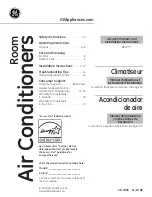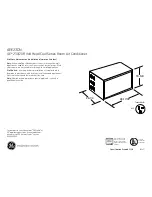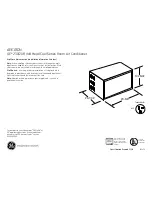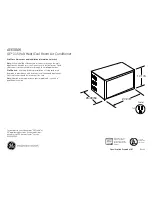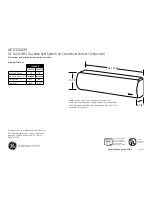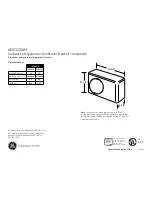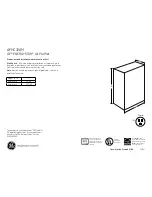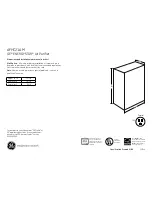
12
32801000801
Specifications subject to change without notice.
SYSTEM VACUUM AND CHARGE
UNIT DAMAGE HAZARD
Failure to follow this caution may result in equipment
damage or improper operation.
Never use the system compressor as a vacuum pump.
CAUTION
!
Refrigerant tubes and the indoor coil should be evacuated using the
recommended 500 microns deep vacuum method. The alternate triple
evacuation method may be used if the procedure outlined below is
followed.
NOTE: Always break a vacuum with dry nitrogen.
Using Vacuum Pump
1. Completely tighten flare nuts A, B, C, D, connect manifold gage
charge hose to a charge port of the low side service valve (see
Fig. 13).
2. Connect charge hose to vacuum pump.
3. Fully open the low side of manifold gage (see Fig. 14).
4. Start the vacuum pump.
5. Evacuate using either deep vacuum or triple evacuation method.
6. After evacuation is complete, fully close the low side of mani-
fold gage and stop operation of vacuum pump.
7. The factory charge contained in the outdoor unit is good for up
to 25 ft. (8 m) of line length. For refrigerant lines longer than 25
ft. (8 m), add refrigerant, up to the allowable length, as specified
in the System Requirements section.
8. Disconnect the charge hose from charge connection of the low
side service valve.
9. Fully open service valves B and A.
10. Securely tighten caps of service valves.
Outdoor Unit
Indoor Unit
Refrigerant
Service Valve
Low Side
High Side
A
B
C
D
A07360
Fig. 13
-
Service Valve
Manifold Gage
500 microns
Low side valve
High side valve
Charge hose
Charge hose
Vacuum pump
Low side valve
A07361
Fig. 14
-
Manifold
Deep Vacuum Method
The deep vacuum method requires a vacuum pump capable of pulling a
vacuum of 500 microns and a vacuum gage capable of accurately
measuring this vacuum depth. The deep vacuum method is the best way
to assure a system is free of air and liquid water (see Fig. 15).
500
MINUTES
0
1
2
3
4
5
6
7
1000
1500
LEAK IN
SYSTEM
VACUUM TIGHT
TOO WET
TIGHT
DRY SYSTEM
2000
MICRONS
2500
3000
3500
4000
4500
5000
A95424
Fig. 15
-
Deep Vacuum Graph
Triple Evacuation Method
The triple evacuation method should only be used when vacuum pump
is only capable of pumping down to 28 in. of mercury vacuum and
system does not contain any liquid water.
Refer to Fig. 16 and proceed as follows:
1. Pump system down to 28 in. of mercury and allow pump to con-
tinue operating for an additional 15 minutes.
2. Close service valves and shut off vacuum pump.
3. Connect a nitrogen cylinder and regulator to system and open
until system pressure is 2 psig.
4. Close service valve and allow system to stand for 1 hr. During
this time, dry nitrogen will be able to diffuse throughout the
system absorbing moisture.
5. Repeat this procedure as indicated in Fig. 16. System will then
be free of any contaminants and water vapor.
CHECK FOR TIGHT, DRY SYSTEM
(IF IT HOLDS DEEP VACUUM)
EVACUATE
BREAK VACUUM WITH DRY NITROGEN
WAIT
EVACUATE
RELEASE CHARGE INTO SYSTEM
BREAK VACUUM WITH DRY NITROGEN
EVACUATE
WAIT
A95425
Fig. 16
-
Triple Evacuation Method
Final Tubing Check
IMPORTANT:
Check to be certain factory tubing on both indoor and
outdoor unit has not shifted during shipment. Ensure tubes are not
rubbing against each other or any sheet metal. Pay close attention to
feeder tubes, making sure wire ties on feeder tubes are secure and tight.


















